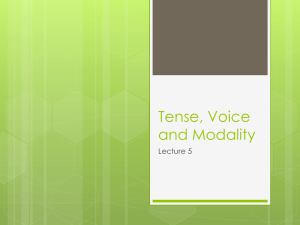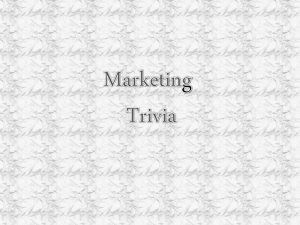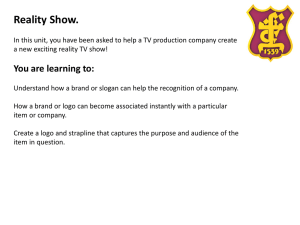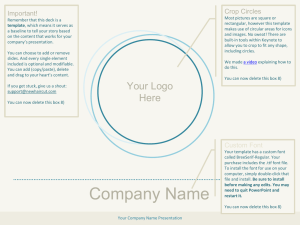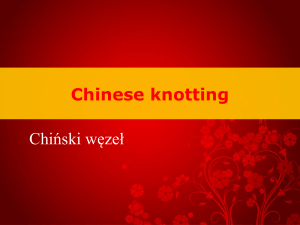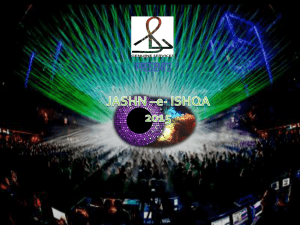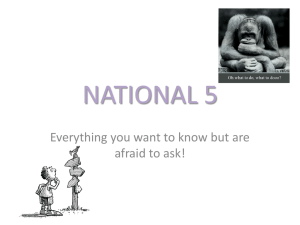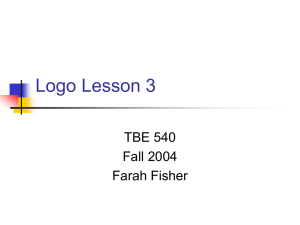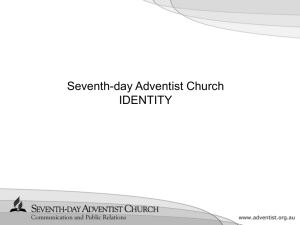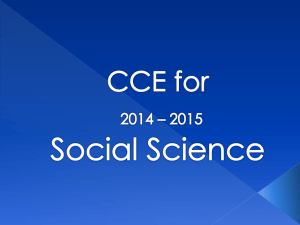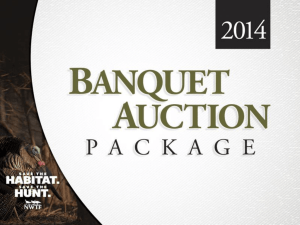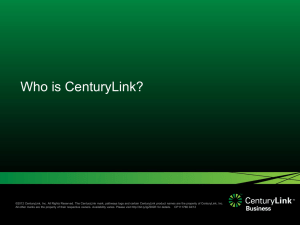Logo Design
advertisement
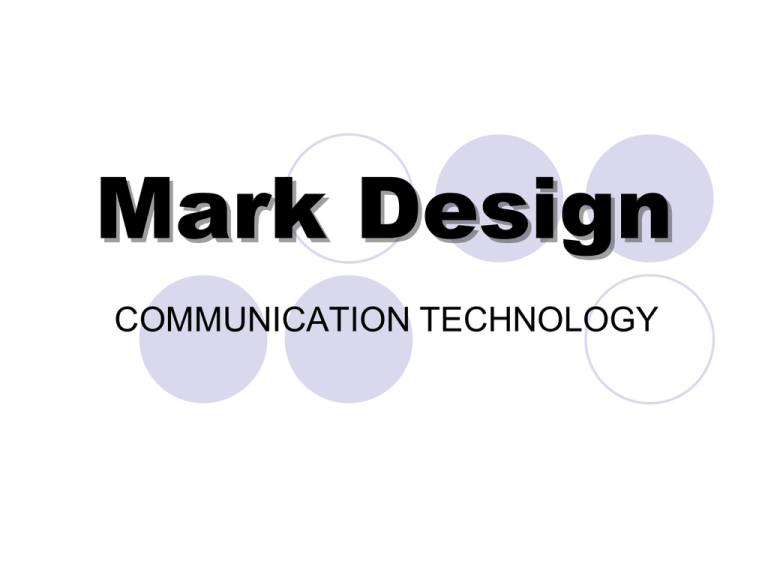
Mark Design COMMUNICATION TECHNOLOGY What is a Mark?: Marks are visual images used to identify a company, organization, person or event. Mark designs typically fall into one of the following categories: - Word Marks - Letter Marks - Symbol Marks - Logo Marks Types of mark designs: Word Mark Primary element of the design is the name of the business. Conveys the name of the business through the style of the font, colours or embellishments. Fonts are chosen and stylized to suit the type of business. Examples of Word Marks: Types of mark designs: Letter Mark: Letters form name in type Used to quickly identify a company, often to shorten name Advantages: letterforms are readable; short, recognizable name Disadvantages: more costly to promote, heavy visual competition (letters) Examples of Letter Marks: Types of mark designs: Symbol Mark Marks without type Advantages: unique, simple, compact, quick impact Disadvantages: costly to explain and promote, confusion with other symbols Examples of Symbol Marks: Types of mark designs: Logo Mark Symbol and words used together Advantages: unique, easy recognition Disadvantages: can be very complex, hard to update, challenge when resizing The symbol reflects something about the personality of the business. This type of mark design is most widely used. Examples of Logo Marks: Examples of Logo Marks: Elements of Logo Design CAPTURE PERSONALITY Logo should clearly express a company’s identity. Should tell people who they are, what they do, how they work and how they want to be seen by the rest of the world. Elements of Logo Design SIMPLICITY People are drawn to clean, uncluttered logos because they can easily recognize it at a glance. Busy, crowded logos with intricate details or elaborate pictures are distracting. Elements of Logo Design PROPORTIONALITY A logo should function as one complete unit. Width shouldn’t be much greater than the height. Logos that are too tall are hard to read when reduced or enlarged. The design should work well on any sized media – from business card to billboard. Elements of Logo Design COLOUR PALETTE 80% of the world’s most recognizable logos use either 1 or 2 colours. Use 1 to 3 colours to keep things simple More than three colours is distracting to the eye and less memorable. Colour should express personality of company. Look at your industry to see trends (i.e. blue is common for tech. companies) Elements of Logo Design FONTS Choose a font that suits the personality of your business. Sans Serif fonts Clean and easy-to-read Two-thirds of most logos use sans serif fonts Franklin Tahoma Century Elements of Logo Design FONTS Serif fonts More serious looking fonts Used more for a traditional or classic design Times Goudy Georgia Elements of Logo Design ORIGINALITY Distinguish your company from its competitors. Should be unique, one-of-a-kind. Should be “ownable” – you want to be able to trademark the logo design. Elements of Logo Design PRACTICAL, USEABLE, ADAPTABLE Too many colours will cost you a fortune every time you need to print business cards or letterhead. Should be able to easily convert to black and white. Should be created in vector format so you can resize when needed without loss of image quality. Elements of Logo Design PRACTICAL, USEABLE, ADAPTABLE These “photo” logos will cause problems when scaling to a larger size than the original file. Will become pixelated and lose quality when scaled larger. Where to start? Browse the Internet to find some companies in the same industry. Look at their logos and determine what you like or don’t like about them. Decide how the name will appear in the design. All capitals? e.g. ALICE’S Coffee Pot Abbreviated? e.g. ACP Unusual spelling? e.g. Alice’s Koffee Pot

